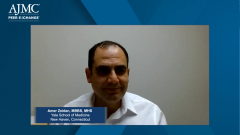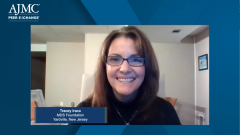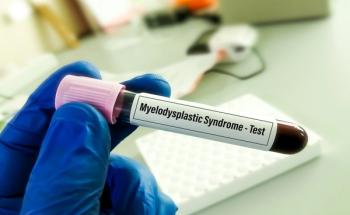
Gaps in the Diagnosis and Treatment of Myelodysplastic Syndromes
Experts consider shortcomings in the identification and management of myelodysplastic syndromes.
Episodes in this series

Transcript:
Bruce Feinberg, DO: I’m curious. I want to hear from both Tracey and Ryan. Tracey, we’ll start with you. From the way you’re engaging the patient population, is it your perception that patients are getting to the specialist in an appropriate amount of time, or is there too much delay in getting patients with the diagnosis to a specialist to treat it?
Tracey Iraca: There’s a bit too much delay. One of the roles of our foundation is that calls come in directly to our patient liaison, and the first thing she does is ensure that the diagnosis has been confirmed by a specialist. We have centers of excellence in MDS [myelodysplastic syndromes], and we always refer to a center of excellence if the patient isn’t already being treated there to confirm the diagnosis. More times than not, the patients are being seen in their local community-based environment because it’s close to home or it’s where they are most comfortable. We push the importance of being seen by an expert in the disease.
Bruce Feinberg, DO: Ryan, what’s your impression of the patients coming into the system? Emory Healthcare has a lot of direct outreach, so it’s not as if there’s just 1 ivory tower. Is the perception that the patients coming into the system are coming in later than they should?
Ryan Haumschild, PharmD, MS, MBA: I’d say so. Part of it is providers being able to recognize it sooner. You and I started this conversation saying, “How do we create better recognition? Even when patients are in, how do we build out the IPSS-R [Revised International Prognostic Scoring System] into the EMR [electronic medical record] so we’re able to drive those decisions and have that standardization of low vs high risk? Those are things we’re working on, especially from our affiliates. In the rural centers that are maybe greater than 4 hours away from Atlanta, there are patients with MDS there who aren’t being recognized or picked up on. By the time they get here, they may be more progressive in disease. That’s what we’re focused on.
Bruce Feinberg, DO: Amer, it gets back to you regarding when there’s delay. Because there was a time with the limited arsenal that they would have had maybe a few more transfusions than they should have had. Maybe they were kept on an ESA [erythropoiesis-stimulating agent] longer than they should have been. But was there harm done because of that delay? Do you believe there’s harm when there’s delay in diagnosis? If so, how does it manifest? It could manifest simply as patient quality of life because they weren’t getting as effective a treatment as possible.
Amer Zeidan, MBBS, MHS: There’s a lot of variation. It depends on which geographic region you live in. For sure, there’s some delay, but it does improve overall. It’s directly related to what you mentioned. Basically, in the past, we didn’t have a lot of great options for most patients. Most of the patients are in their 70s. The primary care sometimes wouldn’t even refer the patient. If the patient gets referred to the hematologist, the hematologist might not do the bone marrow biopsy. If the hematologist does the bone marrow biopsy and diagnoses MDS, they might not refer the patient for a clinical trial, or they think, “I’m just going to give transfusion.” It’s at all levels of the system that we had this idea that the disease didn’t have any treatment and those patients shouldn’t be referred. There has been an improvement in that direction.
Similar to Emory Healthcare, here in Connecticut, many of the satellite centers affiliated with Yale University would email or call about a patient. Even if they don’t physically refer the patient, there will be a conversation like, “I have this patient and they presented like this. Do you have clinical trials? What do you recommend?” This is more important as new therapies trickle in. For example, in 2020, 2 drugs were approved for MDS. It was the pandemic year. It was very difficult to meet anybody face-to-face and do any education. Many people didn’t know about these therapies, so these types of relations become very important.
Transcript edited for clarity.
Newsletter
Stay ahead of policy, cost, and value—subscribe to AJMC for expert insights at the intersection of clinical care and health economics.
































































